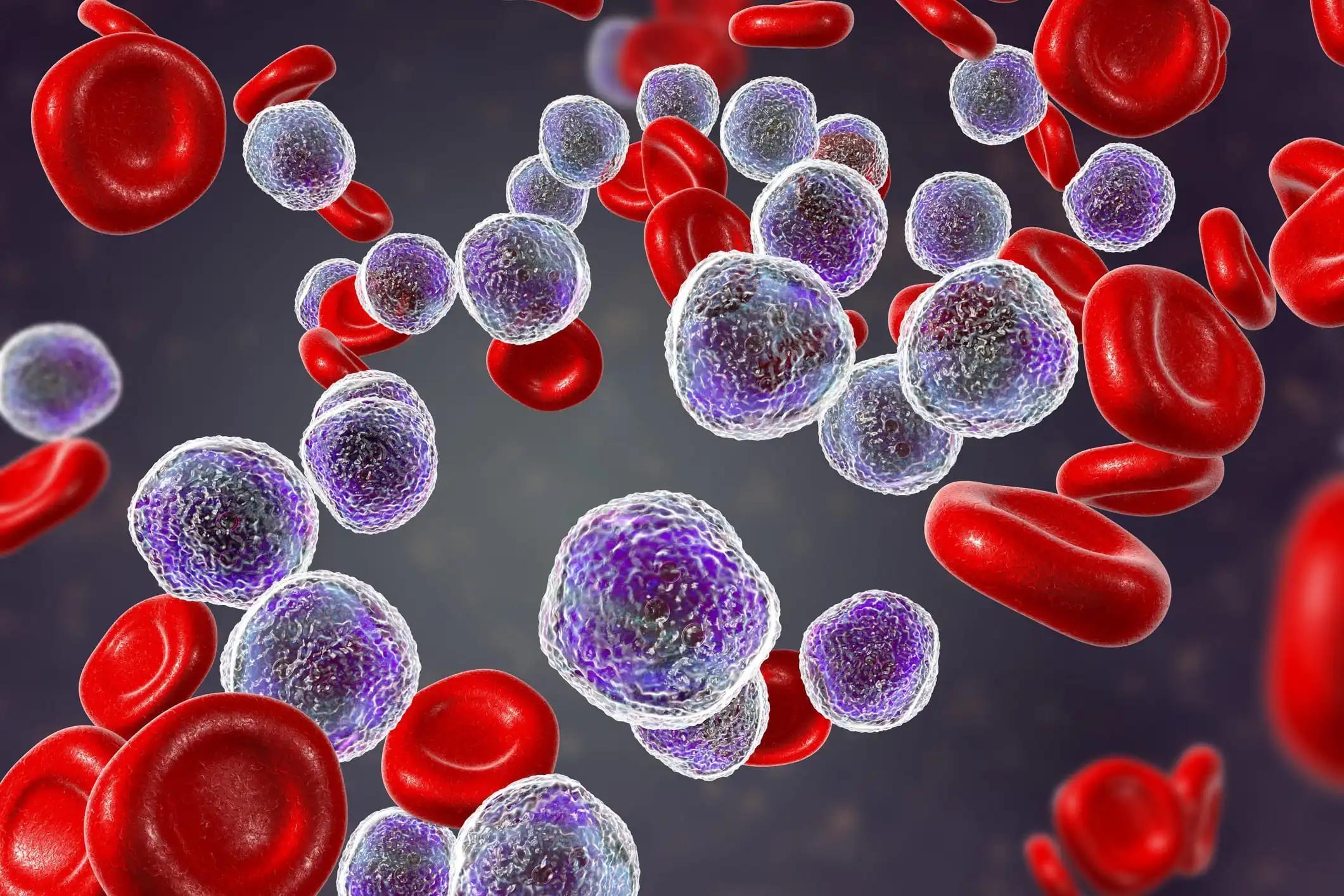KEY TAKEAWAYS
- The V-FIRST phase II trial aimed to compare VFLAI vs. 3+7 induction in intermediate/high-risk AML pts to assess the potential advantage of venetoclax.
- The study used propensity score matching to balance the 3 treatment groups and then compared survival curves using the Log-rank test.
- The study found that FLAI with venetoclax resulted in a deeper disease response and suggested the role of fludarabine-based regimens in high-risk AML.
Venetoclax and chemo demonstrated favorable activity and tolerability in acute myeloid leukemia(AML).
Researchers aimed to compare venetoclax+fludarabine, idarubicin, and cytarabine(VFLAI) vs. 3+7 induction in intermediate/high-risk AML patients(pts) to assess the potential advantage of venetoclax.
The analysis considered several factors, including age at diagnosis, gender, ELN2017 risk classification, and the rate of allogenic transplants. The study assessed balance using the standardized mean difference and represented it visually with a Love plot, aiming for a standardized bias score below 0.2 as a benchmark. The final weighted sample sizes were 183 for 3+7, 54 for V-FLAI, and 155 for FLAI. These weights were determined using a multinomial logistic regression model. Using logit models, the estimated Odds Ratios (OR) and compared survival curves using standard and pairwise Log-rank tests.
The FLAI, V-FLAI, and 3+7 cohorts had differences (median: 52 vs. 54 vs. 49 years, respectively, P<0.001), risk category distribution (P<.001), transplant rates (45% vs. 49% vs. 27%, P<0.001), and the percentage of females (43% vs. 35% vs. 48%, P=0.15). AML1718 had a shorter median follow-up (10.5 vs. 75.8 vs. 104.8 months). After applying matching weights to achieve balance (SMDs <0.18 for all variables), the V-FLAI group showed higher complete response (CR) and minimal residual disease (MRD) negativity rates compared to FLAI and 3+7. The OR for achieving CR was significantly higher in V-FLAI and FLAI than 3+7 (P=0.01 and P=0.03, respectively). V-FLAI and FLAI did not differ significantly in their CR probabilities (P=0.34). The OR associated with the V-FLAI group for MRD was significantly higher, indicating a higher likelihood of MRD negativity than FLAI and 3+7 (P=0.005 vs. FLAI; P=0.001 vs. 3+7). When examining 12-month survival outcomes, after weighting, the disease-free survival (DFS) estimate for the V-FLAI group was higher than that for “3+7” and FLAI (P=0.048).
The study found that VFLAI with venetoclax resulted in a deeper disease response and suggested the role of fludarabine-based regimens in high-risk AML.
Source: https://ascopubs.org/doi/abs/10.1200/JCO.2023.41.16_suppl.7013
Clinical Trial: https://clinicaltrials.gov/study/NCT03455504
Giovanni Martinelli, Marta Cipriani, Giovanni Marconi, Fabio Guolo, Paola Minetto, Francesca Paoloni, Francesca Cotugno, Laura Di Donato, Giorgia Simonetti, Raffaele Palmieri, Francesco Buccisano, Paola Fazi, Marco Vignetti, Cristina Papayannidis, Roberto M Lemoli, Adriano Venditti, and Alfonso Piciocchi. DOI: 10.1200/JCO.2023.41.16_suppl.7013 Journal of Clinical Oncology 41, no. 16_suppl (June 01, 2023) 7013-7013.



